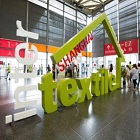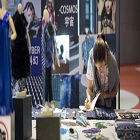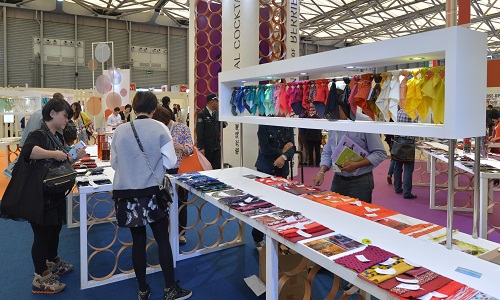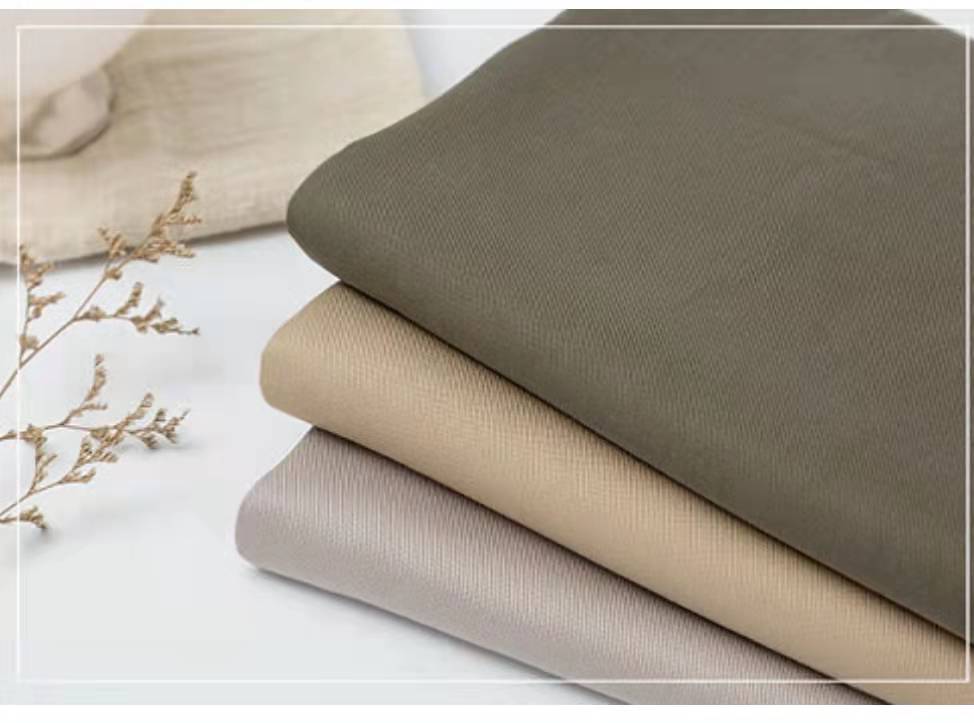FW
India is likely to chalk out amendments to its existing tax treaty with Singapore, on the lines of those achieved with Mauritius. Speaking at the 13th international tax conference, organised by Assocham, Akhilesh Ranjan, Chief Commissioner of Income Tax (International Taxation) said there may be small variations and some fine tuning but substantially similar to the amendments effected in the India-Mauritius treaty. Elaborating on the issue, Ranjan said that talks are going on and there are some procedures to be followed. Modalities are on. This remark is significant as it indicates that India would strive for attaining the taxing right on sale of shares of an Indian company, by a Singapore-based tax resident.
The existing India-Singapore tax treaty provides for residence-based capital gains taxation, capital gains on sale of shares would be taxable only in the country of residence of the seller, subject to satisfaction of limitation of benefits clause. With India-Mauritius tax treaty amendments notified, all eyes are now on how India-Singapore tax treaty would get reshaped. This is because the amendments in the Mauritius treaty would also result in the withdrawal of capital gains exemption for investors based in Singapore with effect from April 1 next year. At present, investments through Singapore accounts for nearly 16 per cent of foreign direct investment (FDI) (from April 2000 to March 2016) in India, second only to Mauritius.
Due to the ongoing political dispute, illegal protests and tough competition, more than 70 garment and footwear factories in Cambodia have been closed down in the first eight months of this year. Garment Manufacturers Association in Cambodia (GMAC) operations manager, Ly Tek Heng says the political situation has affected business. Political issues, illegal demonstrations and competition from other garment and footwear exporting countries like Vietnam, Bangladesh and Myanmar had deterred investors from investing in Cambodia and made buyers reluctant to order from the country. In the first eight months this year, more than 70 factories have been shut down while only 20 new ones opened. This came as orders dropped by almost 30 per cent, forcing closures and slashing of working hours.
Contesting Heng’s claim, commerce ministry spokesperson Soeng Sophary downplayed the news saying closures did not mean the industry was under threat. She blamed global insecurity for the closures citing the upcoming presidential elections in the United States, the recent referendum in Britain, as well as the high price of electricity.
Contrary to GMAC's figure of a 30 per cent drop in buyer's orders suggesting trouble in the garment sector, recent figures released by the Commerce Ministry painted a far better picture. The ministry stated that total garment and footwear exports in the first quarter of this year increased by 39 per cent to $2 billion. The garment and footwear industry, which is the kingdom's biggest foreign currency earner, has some 1,000 factories employing 754,000 workers.
The special highlight of the Yarn, Fabric & Accessories Trade Show (YFA) show to be held from November 23 to 26, this year will be the Denim Zone. The zone will see 20 top Indian denim fabric makers exhibiting their denim innovations. Another the highlights would be ‘YFA Talent’, a fashion designing contest for upcoming talent from leading fashion designing institutes. The organizers have also arranged a conference in association with TIT-Bhiwani and the Textile Association of India (TAI).
One more initiative is Titoba, an alumni meet with a gathering of more than 800 top industry professionals in association with TIT Bhiwani and also the Textile Association of India (TAI). There will also be a special Chinese Pavilion where around 40 Chinese exhibitors will showcase yarns, fabrics and garment accessories. WGSN, the global authority on fashion trends will be the Trend Partner and will also be putting up a Pavilion.
In the 2015 edition, the show had as many as 100 exhibitors and more than 7,477 visited the show. For the upcoming show, the organizers expect over 250 brands from many countries and more than 15,000 visitors, who too are expected from 15 countries. Their optimism stems from the fact that with still more than 100 days to go, nearly 80 per cent of the space has already been booked mainly driven by returning exhibitors who have booked bigger stalls having got good results at the last edition.
All this has led to the organizers doubling the exhibition space from one hall in 2015 to two halls for the 2016 edition, which will feature products from fibres to yarns to fabrics and finally accessories. The event will attract renowned suppliers from in these four segments.
The fair is being organised by Vision Communications, supported by the Northern India Textile Mills Association (NITMA) along with AEPC (Apparel Export Promotion Council), TA(I) (Textile Association of India), PDEXCIL (Power loom Development Export Promotion Council), CMAI (Clothing Manufacturers Association of India), FOHMA (Federation of Hosiery Manufacturers Association), NAEC (Noida Apparel Export Cluster), NITRA (Northern India Textile Research Institute), UP Apparel Exporters Association and PTA Users Association as supporting associations.
The global hosiery market is expected to grow at a compound annual growth rate of around four per cent in the next four years. Hosiery includes socks, tights and pantyhose and nylons. In terms of revenue, the socks segment dominated the global hosiery market in 2015 with a share of more than 69 per cent. The growth of socks segment is mainly driven by the increasing demand for socks from the age group up to 14 years and the age group 15 to 64.
Consumers look for quality, durability, fit, style, and glamour while purchasing hosiery products. Not only is the market for women’s hosiery rising, the demand for such goods is rising from the men's segment too because these days even men follow new trends in fashion and apparels.
The e-commerce sector is a major driver propelling the growth of the hosiery market. Online retail stores save the consumer's time, give product availability at doorsteps, and offer products at discounted prices. In terms of region, the e-commerce market in North America is the fastest growing market with nations like the US and Canada dominating the share.
Europe has a 34 per cent share of the global hosiery market. Major factors contributing to the growth of this region is the rising demand for socks from the working population; where women’s hosiery generates the highest revenue.
With innovations chemically protective suits made of fabric coated in self-healing, thin films may prevent farmers from exposure to organophosphate pesticides, soldiers from chemical or biological attacks in the field and factory workers from accidental releases of toxic materials.
The material to be coated is dipped in a series of liquids to create layers of material to form a self-healing, polyelectrolyte layer-by-layer coating. This coating is deposited under ambient conditions in safe solvents, such as water, at low cost, using a simple equipment amenable to scale-up.
During the layering, enzymes can be incorporated into the coating. Polyelectrolyte coatings are made up of positively and negatively charged polymers. Many toxic substances can be absorbed through the skin. Organophosphates, used as herbicides and insecticides, are absorbed through the skin and can be lethal. Some of these chemicals have also been used as nerve agents. A garment coated with a self-healing film containing an organophosphate hydrolase, an enzyme that breaks down the toxic material, could limit exposure.
For manufacturing environments where hazardous chemicals are necessary, clothing coated with the proper enzyme combination could protect against accidental chemical releases. Future use of these coatings in medical meshes could also help patients minimize infections for quick recovery.
The Chhattisgarh government is keen to develop a green Textile Park near Raipur with elaborate solid waste management practices and rain water harvesting, officials informed. The project will also comprise of treated water supply system, storm water management and common effluent treatment plant.
The proposed textile park is envisaged to house world class eco-system for the textile industry. It will also house a testing laboratory (including equipment), design centre (including equipment), training centre, trade & display centre, conferencing and meeting facilities, warehouse/raw material depot, packaging unit canteen and worker hostels and recreation centre.
For the development of the said park, the Chhattisgarh State Industrial Development Corporation (CSIDC) has identified a land parcel measuring 30 hectares at Village Khapri, Tehsil Tilda in Raipur district. The proposed park is aimed at providing one-stop integrated facilities with manufacturing support, welfare and common infrastructure facilities to the prospective textile industries. Notably, the Central government has approved projects worth Rs 99 crores for upgradation of key industrial infrastructure in Chhattisgarh.
Currently, the infrastructure of Urla Industrial Area in Raipur and Sirgitti Industrial Area in Biilaspur are being upgraded which includes improvement of roads, water and power supply facilities, it is learnt. The Centre has approved an estimated Rs. 54.81 crore for upgradation of infrastructure facilities at Urla Industrial Area and around Rs. 44.60 crore for Sirgitti Industrial Area.
Aiming to make the ailing corporation operationally sound and economically viable, the Bangladesh Textile Mills Corporation (BTMC) is looking at reopening six closed textile mills with Chinese help. The six textile mills owning a total of 153 acres of land are: Ahmed Bawani Textile Mills in Demra, Quaderia Textile Mills in Gazipur, Dinajpur Textiles Mills in Dinajpur, Dost Textiles Mills in Feni, Tangail Cotton Mills in Tangail and RR Textile Mills in Chittagong.
As a part of the move, the Ministry of Textile and Jute has sent a proposal to the Planning Commission (PC) seeking the latter's approval to go for joint venture with a Chinese company. After getting the PC's approval, steps regarding re-opening of the BTMC mills would be taken under a 'government to government' arrangement between Bangladesh and China.
The move came in line with the government's decision not to sell any mill and revive the state-owned textile mills, they added. A proposal has been sent to the Planning Ministry which is considering the move. The use of outdated machinery is one of the major problems that the state-owned textile mills have been facing. The problem has also been severely hampering the production of existing seven units in operation while the BMRE (balancing, modernisation, rehabilitation and expansion) is a must to reopen the closed factories.
After Target Corp terminated a sourcing deal with Welspun India over cheap quality bed sheets being passed off as premium Egyptian cotton, Walmart Stores is reviewing Welspun’s cotton certification records. Besides the examination, Walmart plans to talk to the supplier and if any issues crops up, the retailer plans to handle it appropriately. Walmart happens to be Welspun's third-biggest customer, as per Bloomberg.
After Target Corp’s pull out, Welspun’s shares have been seen tumbling down 1ell to as low as Rs 65.85 in Mumbai trading on Tuesday. On Monday, the company said it's reviewing its supply chain and hiring a ‘Big Four’ accounting firm to examine its processes. After Monday's decline, the stock of Welspun has a market capitalization of $1.2 billion.
Welspun makes towels, sheets, rugs and carpets for 18 of the top 30 global retailers. Other major clients of Welspun include J.C. Penney Co. and Macy's Inc. Every fifth towel sold in the US is manufactured by Welspun India, according to the company. Welspun Group wants to become one of India's top 50 groups by market value by 2020.
"Countdown has begun for Asia’s leading trade event for the home textiles industry, Intertextile Shanghai Home Textiles-Autumn 2016 edition that opens tomorrow August 24th till August 27th at the Shanghai National Exhibition and Convention Centre. The four day event is a reflection of a booming international home textiles market and the increasing opportunities waiting to be tapped across countries."

Countdown has begun for Asia’s leading trade event for the home textiles industry, Intertextile Shanghai Home Textiles-Autumn 2016 edition that opens tomorrow August 24th till August 27th at the Shanghai National Exhibition and Convention Centre. The four day event is a reflection of a booming international home textiles market and the increasing opportunities waiting to be tapped across countries. The positive feedback of last year’s event has prompted the organizer to make it a found day-long event this year with participation of global brands from different regions under the same roof. “Given the relatively robust conditions in the domestic home textiles sector as well as steady demand for overseas brands, we expect that this year’s fair will be another success,” says Wendy Wen, Senior General Manager of Messe Frankfurt (HK) and goes on to add “The strong international nature of the fair shows that overseas brands are still seeking out opportunities in China and Asia, and that Intertextile Shanghai is their preferred platform to do so.”
Global exhibitors under one roof

Spread over 160,000 sq. mt. and six halls at the National Exhibition and Convention Center, the fair will feature around 1,150 exhibitors from 30 countries. The international exhibitors will be highlighted in a separate hall. A number of exhibitors representing over 30 brands such as Armonia di Interni, Boeme, Designers Guild, La CanTouch and Zimmer + Rohde along with exhibitors promoting products in the Whole-Home concept will be featured in a hall together for the convenience of the visitors. In Hall 4.1, seven countries viz, Belgium, India, Morocco, Pakistan, Portugal, Taiwan and Turkey will be featured. Some of the leading suppliers participating this year include upholstery brands Ateja, Celesta, Culp and Enzo Degli Angiuoni, Advansa, Brinkhaus and Cotton Council International, design studios like Antoinette et Freddy, Atelier Mineeda and Cosmo Kumagaias etc. The exhibition will also feature companies specialising in digital printing such as Atexco, d.gen, DIGITEX and Epson. Apart from the international exhibitors, four Chinese regional pavilions will have the country’s leading home textile brands.
Knowledge sharing through special
Insightful design and trend forecasting programs, product demonstrations and seminars are lined up as well. This year’s program includes three parts: Trend Area, Trend Concept Exhibition and Forum Space. The intention is to provide participants with the latest design and trend direction. While Trend Area will be designed by a Nelly RodiTM Agency, the internationally renowned specialists on consumer lifestyle demand, almost 11 famous Chinese designers will utilised the products of six renowned editor brands to interpret the trend theme ’Far Away’ in the Trend Concept Exhibition. Also, a series of seminars will be held in the Forum Space, with designers and trend experts sharing their views on interior decorations, market trends and the latest technology.
Apart from the Inter Design program, this year Messe Frankfurt has also cooperated with Lenzing to feature eco-friendly home textile products in the Green Zone. A number of Lenzing’s partner mills will showcase their green products including mattresses, bed linen, duvets, towels and carpets which focus on the TENCEL® fibre. There will also be seminars in the digital printing seminar area in which industry players share the latest industry updates and market information.
Inter textile Shanghai Home Textiles-Autumn edition is organised by Messe Frankfurt (HK), the Sub-Council of Textile Industry, CCPIT; and the China Home Textile Association (CHTA).
The Autumn 2016 edition of Intertextile Shanghai Apparel Fabrics, organized by Messe Frankfurt, is all set to open its doors at the National Exhibition and Convention Centre, Shanghai from October 11-13. The fair considered to be one of the most effective marketplaces for international business development, will highlight some of the key trends in design and printing primarily. The three day fair will also address the most pertinent issues of sustainable development through a series of discussions.

The Autumn 2016 edition of Intertextile Shanghai Apparel Fabrics, organized by Messe Frankfurt, is all set to open its doors at the National Exhibition and Convention Centre, Shanghai from October 11-13. The fair considered to be one of the most effective marketplaces for international business development, will highlight some of the key trends in design and printing primarily. The three day fair will also address the most pertinent issues of sustainable development through a series of discussions. It will feature an extensive range of fringe programs and events, including six ‘Trend Forums’ revealing overseas and domestic trends, as well as a series of seminars, the Digital Printing Forum and panel discussions offering the latest market information.
Forum to forecast future design trends

The event ,envisioned by the Intertextile Directions Trend Committee, which comprise of top trend forecasters from Doneger Creative Services (US), NellyRodi™ Agency (France) and Elementi Moda (Italy), as well as Sachiko Inoue (Japan), will put forth the trend forecast through the inter textile Directions Trend Forum under three major themes- Enigmatic, Manifesto and Eccentric.
While the theme ‘Enigmatic’ is described as a luxurious, sensual and thoroughly modern story, based on the blurring delineation between what is considered masculine and what is feminine. It would emphasise on tailoring balanced by touches of lingerie where urban and countrified settings meet. The mood is executed in a range of warm neutral tones, frosted pastel accents and metallic touches that emphasise the imperfect, yet precious nature. Simultaneously, ‘Manifesto’ reveals authenticity and nostalgia resonating through industrial inspiration coupled with an upcycled/recycled and sustainable mentality. Another major theme highlighted is ‘Eccentric’. This focuses on the world as a fashion stage, with highly original, playful and opulent fashion presentations. It would reveal historic, antique and ’70s references mix with casual elements for a personalised effect. In parallel forums, there will be in-depth discussion on trends on accessories, menswear (Hall 6.1), women’s wear and casual wear. These will also demonstrate the A/W 2017-18 domestic trends under four themes: Future Intelligence, Symbiosis Art, Balance Philosophy and Merging Time.
Digital Printing trends & Sustainability are major highlight
Keeping up with the forum agenda of 2015, there will be more in-depth panel discussions on digital printing with experts from Konica Minolta, Kornit Digital China and World Textile Information Network (WTiN), UK sharing their unique insights on various topics. The discussions are expected to highlight the impact of digital printing in changing the rules of the textile and apparel value chain and global trends in the roll-to-roll and direct-to-garment digital textile Industry. While the forum will forecast the key trends in sportswear, denimwear, premium bespoke menswear, it will also address issues opportunities & challenges of international children’s market after Brexit, holistic sustainability performance measurement and the highlights of smart textile era.
Messe Frankfurt is one of the world’s leading trade fair organisers, generating around €648 million in sales and employing 2,244 people. The Messe Frankfurt Group has a global network of 30 subsidiaries and 55 international Sales Partners, allowing it to serve its customers on location in 175 countries. Messe Frankfurt events take place at approx. 50 locations around the globe.












